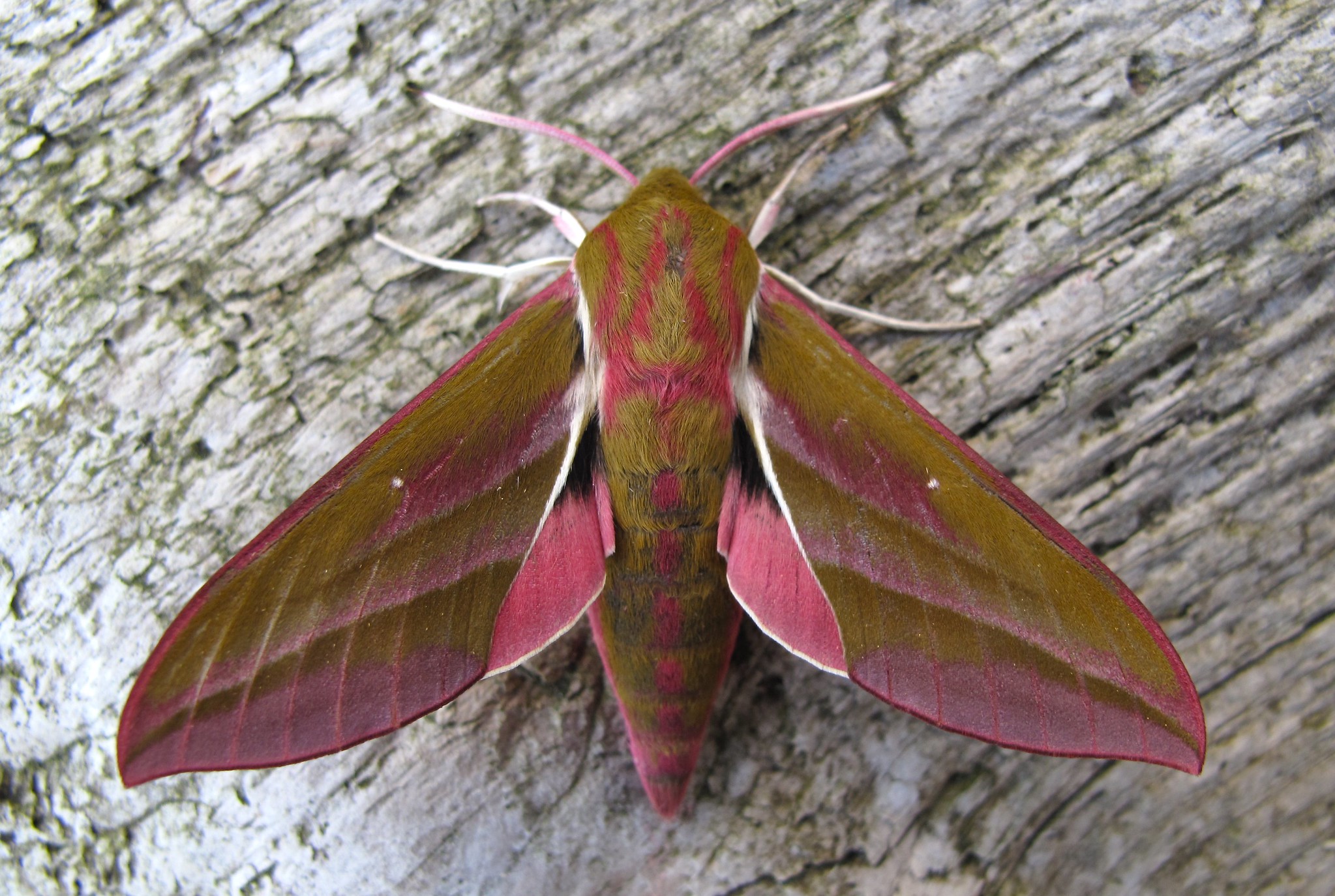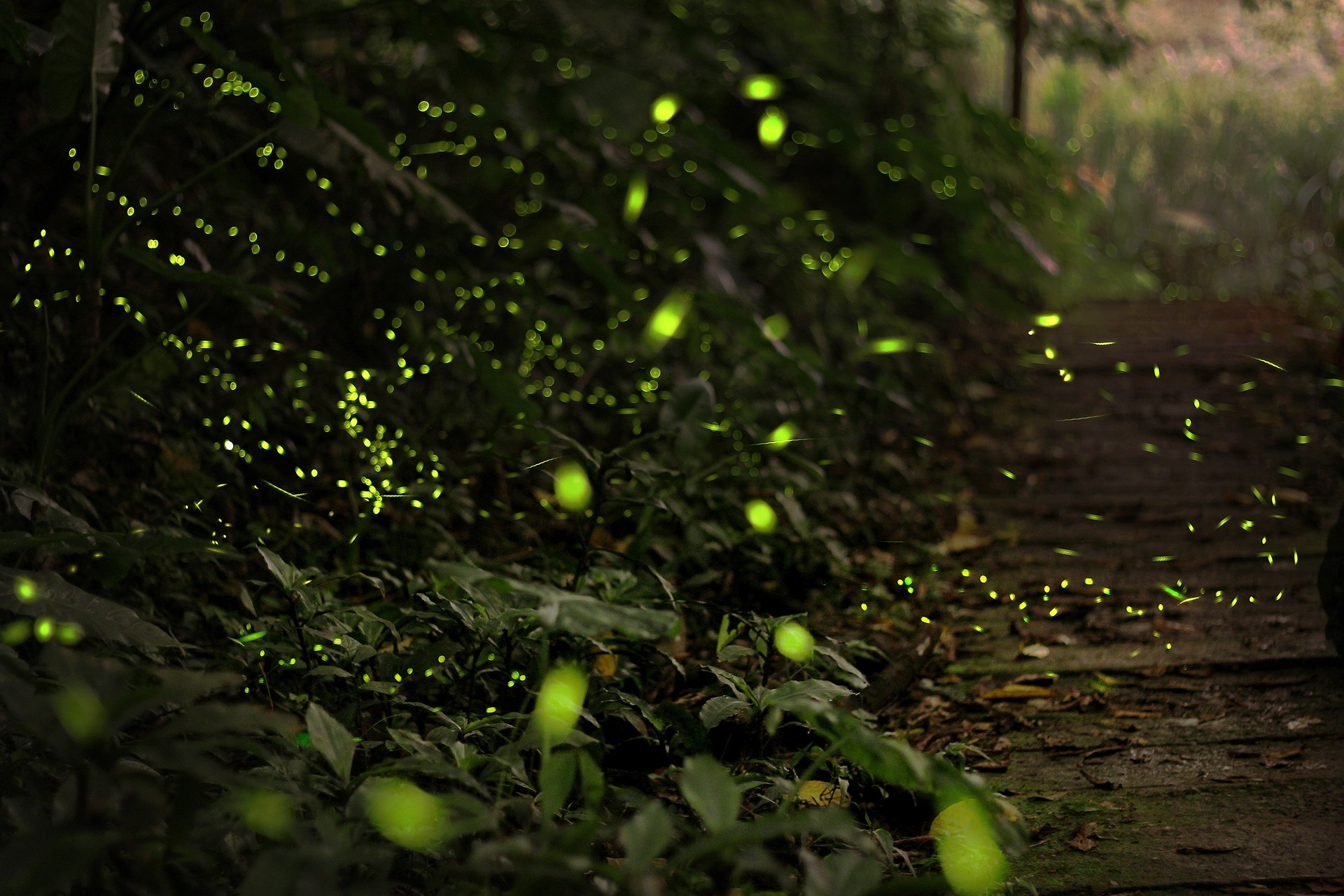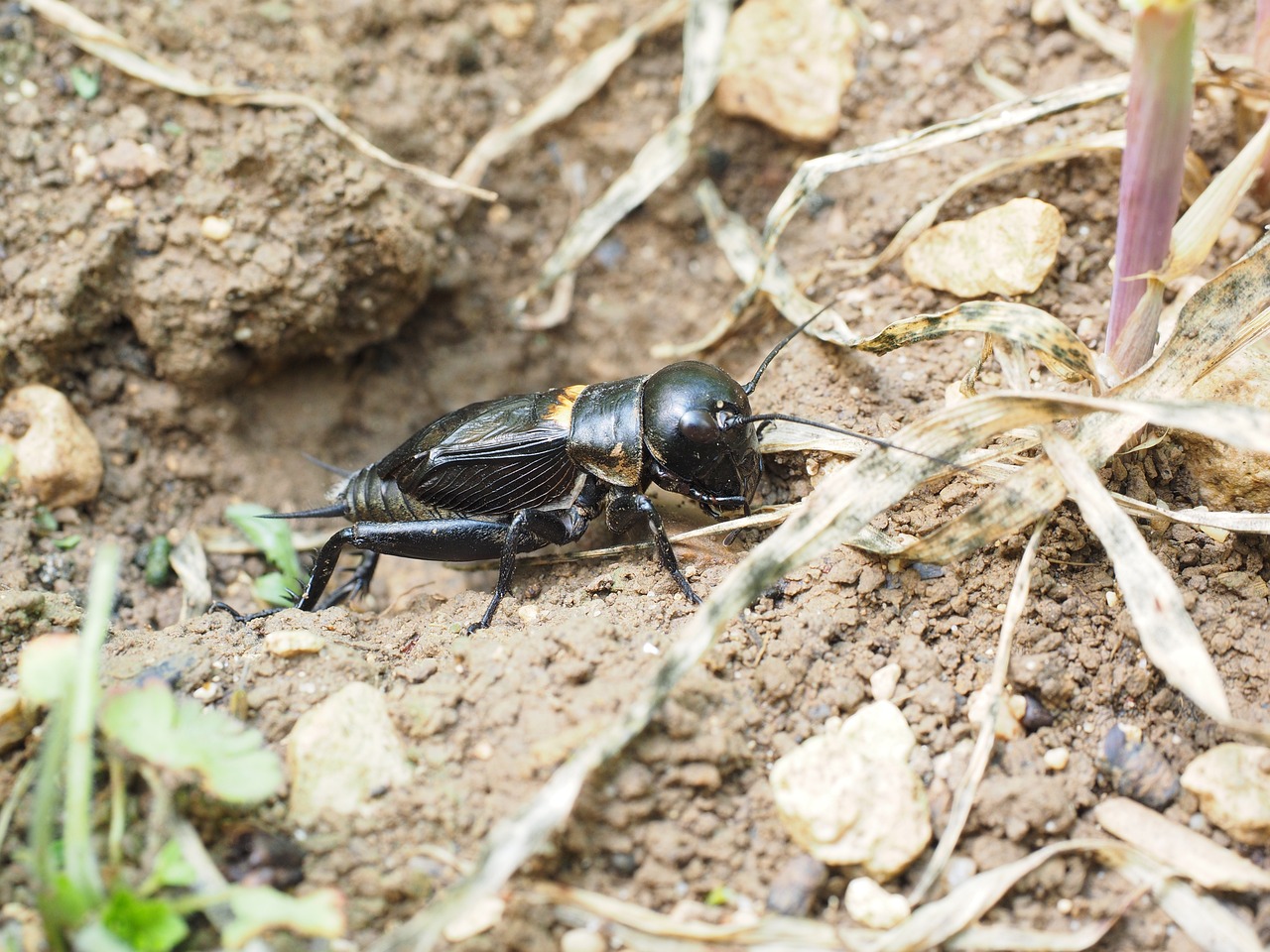Bright Side of the Night – 2.2.6
Insects
Over 60 % of invertebrates are nocturnal. Among them, insects are the class with the greatest species diversity. They play a crucial role in food webs and are the most important pollinators. As far as their visual perception is concerned, insects are able of high temporal resolution. Nocturnal insects are in principle able to see colours at night, and to navigate by means of celestial bodies.
Butterflies and Moths
One particularly species-rich order of insects are Lepidoptera, comprising butterflies and moths. In Austria, for instance, 2700 species of butterflies and moths have been identified. A vast majority of them prefer nocturnal rhythms.
Medium Vine Hawk-moths
All over Europe except from the far North, different nocturnal butterflies (moths) can be found. They live in damp areas, such as riparian forests, or along bodies of water, but also in parks and gardens. The Medium Vine Hawk-moth (Deilephila elpenor) for instance is a common nocturnal butterfly that can even see colours by starlight![1] The nectar-sucking moths can be seen from mid-May to July. Their caterpillars feed at night, especially when they are still young, e. g. on the common evening primrose (Oenothera biennis).
Fireflies
Adult fireflies can be observed on warm summer nights. In the case of the Central European firefly, the eggs, larvae, pupae, females and males all glow! This special gift is called bioluminescence and it is used to ward off enemies and find mates. Glowing is a result of the substance luciferin, which is oxidised by an enzyme. The females cannot fly, hence they use their light signal to indicate their readiness to mate to flying males.[2]
Field Crickets
The field cricket (Gryllus campestris) is found from North Africa via Central and Southern Europe to the Caucasus, and it likes warm, sunny and dry slopes, meadows, gravel pits and heaths as well as sparse pine forests. This insect exhibits highly developed acoustic communication based on differentiated sound and hearing organs. Only sexually mature males are capable of vocal communication. The males chirp when they are ready to mate, from May to June or July, and from late morning all the way into the night. Their decoy song can be heard about 50-200 m away. After mating, the female lays the eggs in the ground, where the larvae hatch after two or three weeks. Despite its wings, the field cricket cannot fly.[2]
References:
[1] Kelber, Balkenius & Warrant (2002) cited by Eisenbeis in Posch, Freyhoff & Uhlmann, 2010: Das Ende der Nacht – Die globale Lichtverschmutzung und ihre Folgen. Wiley-Vch Verlag, Weinheim.
[2] Brochure Night in the Nature Parks of Luxembourg: Nachtfibel.


Further Resources
Links below will redirect you to external websites. In accordance with the European data protection declarations, we would like to point out that by clicking on these links you may send data to external providers. We cannot prevent that.
Images
![]() A vast number of photos of insects can be accessed at Pixabay.
A vast number of photos of insects can be accessed at Pixabay.
Videos
![]() Lights out? Fireflies face extinction threats of habitat loss, light pollution, pesticides
Lights out? Fireflies face extinction threats of habitat loss, light pollution, pesticides
![]() What’s Behind The Firefly’s Glow | What’s Inside?
What’s Behind The Firefly’s Glow | What’s Inside?
![]() Why Moths are Obsessed with Lamps | National Geographic
Why Moths are Obsessed with Lamps | National Geographic
![]() Dung Beetles Navigate Using the Stars
Dung Beetles Navigate Using the Stars
Online Resources
![]()
 The influence of light pollution on plants, animals and ecosystems (Helle Not)
The influence of light pollution on plants, animals and ecosystems (Helle Not)
![]()
 What happens at night just beyond our doorstep? Bothersome-Brightness-Cartoons. (Helle Not)
What happens at night just beyond our doorstep? Bothersome-Brightness-Cartoons. (Helle Not)
![]()
 Verlust der Nacht / Loss of the Night: Interdisciplinary Research network
Verlust der Nacht / Loss of the Night: Interdisciplinary Research network
![]() Into the Night in the Kaunertal Valley (Online publication)
Into the Night in the Kaunertal Valley (Online publication)
![]() Website engaging in research and conservation of fireflies (DE/FR/IT)
Website engaging in research and conservation of fireflies (DE/FR/IT)
![]() Buglife: A Review of the Impact of Artificial Light on Invertebrates
Buglife: A Review of the Impact of Artificial Light on Invertebrates
 Unterwegs in die Nacht im Kaunertal (Online publication)
Unterwegs in die Nacht im Kaunertal (Online publication)
 Konzept zur nachtbezogenen Naturpädagogik (Online publication)
Konzept zur nachtbezogenen Naturpädagogik (Online publication)
 Estinzione degli insetti: colpa (anche) dell’inquinamento luminoso – Focus
Estinzione degli insetti: colpa (anche) dell’inquinamento luminoso – Focus
 La luce artificiale sta cambiando il comportamento degli insetti notturni – Focus
La luce artificiale sta cambiando il comportamento degli insetti notturni – Focus
 Gli insetti sono in pericolo (ma possiamo ancora salvarli) – National Geographic Italia
Gli insetti sono in pericolo (ma possiamo ancora salvarli) – National Geographic Italia
Further Readings
![]()
 Regularly updated Literature and links with regards to light pollution and dark skies (Helle Not)
Regularly updated Literature and links with regards to light pollution and dark skies (Helle Not)
![]()
 Literature & Links on the website “Verlust der Nacht/Loss of the Night”
Literature & Links on the website “Verlust der Nacht/Loss of the Night”
![]() Scientific paper: Light pollution is a driver of insect declines (2020)
Scientific paper: Light pollution is a driver of insect declines (2020)
![]() Scientific paper: Light pollution forces a change in dung beetle orientation behavior (2021)
Scientific paper: Light pollution forces a change in dung beetle orientation behavior (2021)
 Publikation: “Lichtverschmutzung und die Vulnerabilität nachtaktiver Insekten” (2019)
Publikation: “Lichtverschmutzung und die Vulnerabilität nachtaktiver Insekten” (2019)
 Nachtfibel: Nachts in den Naturparken Luxemburgs
Nachtfibel: Nachts in den Naturparken Luxemburgs
Teaching Material
![]() Outdoor learning ressource: glow worms
Outdoor learning ressource: glow worms
 Glühwürmchen – Zauberhaftes Funkeln im Dunkeln
Glühwürmchen – Zauberhaftes Funkeln im Dunkeln
For Kids
![]()
 Materials for young scientists: Quiz, Arts and craft corner, App and Exhibition for schools. (Loss of the Night network)
Materials for young scientists: Quiz, Arts and craft corner, App and Exhibition for schools. (Loss of the Night network)
 Unterrichtsmaterialien für Schulen – “Tierprofi Wildtiere” (Die Umweltberatung)
Unterrichtsmaterialien für Schulen – “Tierprofi Wildtiere” (Die Umweltberatung)
 Unterrichtsmaterialien für Schulen – “Lichtverschmutzung” (Die Umweltberatung)
Unterrichtsmaterialien für Schulen – “Lichtverschmutzung” (Die Umweltberatung)
 Wissens- und Methodenbox „Kunstlicht, Nacht und Sternenhimmel“ (Naturfreunde)
Wissens- und Methodenbox „Kunstlicht, Nacht und Sternenhimmel“ (Naturfreunde)
 Perchè le lucciole lampeggiano? (Virgilio Video Kids)
Perchè le lucciole lampeggiano? (Virgilio Video Kids)

